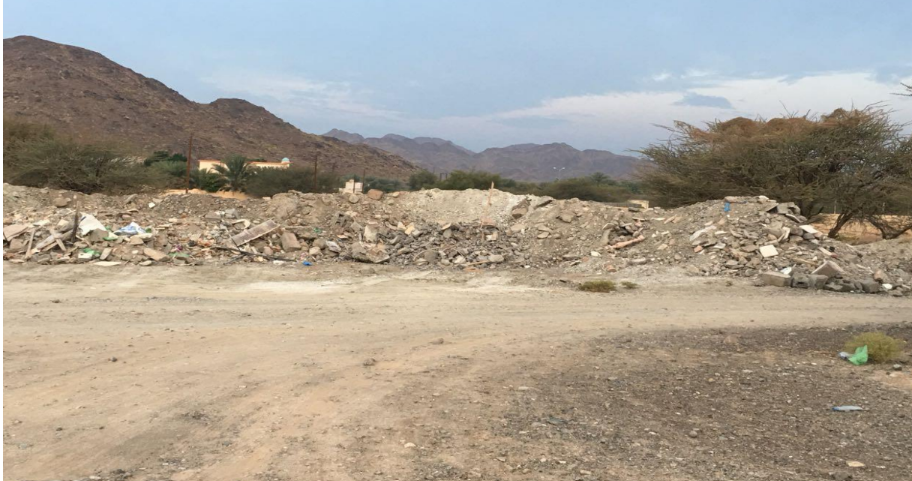Stars and STEM Stories
The Impact of Explosive Remnants of Buildings Due to Construction on Oman's Land Cover and Biosphere
This research aimed to have students study the remnants of buildings and their impact on vital covers to find solutions to the problems caused by construction waste, as well as to raise awareness about the damage caused by the remnants of the buildings.

Students Albaraa bin Khalfan Albadwi, Emad bin Amer Alramimi,
and Abdullah bin Khalfan Aljahdami from the Alhawari Bin Mohammed
Alazdi School for Boys (Oman) began the process of brainstorming to
extract the research questions:
- What are the most important natural elements affected by?
- How have the remnants of the buildings impacted surrounding soil and vegetation cover, and to what extent?
- What are the results that produce explosive remnants of building on the green surfaces and how to limit their impact?
The students used The GLOBE Program's Soil and Land Cover Protocols
to take the necessary
measurements. The students also conducted
short interviews with the affected persons from the remnants of the
buildings. After taking measurements, the results were as follows:
- Measuring soil temperature, they concluded that the soil has been affected because of the waste; there was a rise in temperature (35 degrees compared to other non-affected areas).
- The soil was also affected by decreasing the number of plants compared to other green surfaces. Soil lacked the general presence of plants ad only residual dry herbs remained.
- Soil pH showed damaged because of the mixing of the soil with waste on a large scale, 5.1 acidity. The number of carbonates in the soil was low, adding to the acidity.

The students recommended to Oman's Ministry of Regional
Municipalities to create places to recycle the construction waste.
They also recommended giving penalties for those who harm the green
cover in those areas. This research project helped to build community
awareness around work camps to clean the remnants of the buildings
because of their negative effects.
Images courtesy Dr. Ishaq Al-Jabri, GLOBE Oman.





